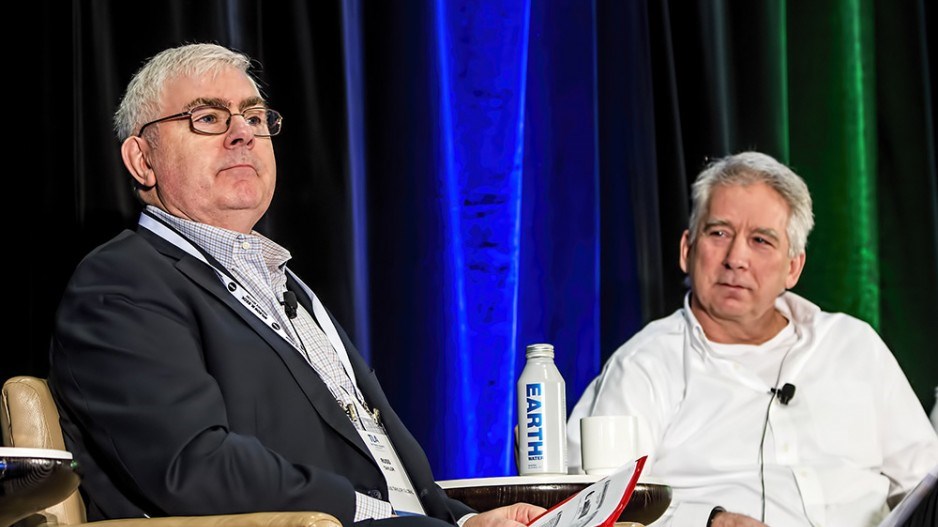Business
My Side of the Hiring Desk

|
|
There are two sides to every interview: Yours and the interviewers. Here’s a pleasant truth: You and your interviewer have the same agenda: To determine if the job opportunity is right for you.
Your interviewer isn’t your enemy. They want to hire the right person. Job seekers never consider that their interviewer’s hiring decisions are judged by their boss and their boss’s boss, the team the new hire will join—essentially everyone at the company.
I never want to hear: “Who hired Bob? He always comes in late, is rude, has yet to complete his assignments on time, and has below-average Excel skills for a junior accountant. What was Nick thinking about hiring Bob?”
A hiring manager’s ability to hire-their judgment skills-will be called into question if he or she makes “a few” bad hires. The same holds true if a recruiter presents unsuitable candidates to their client. It’s good to be sympathetic to your interviewer’s need to make a good hire; it’ll help you bond with your interviewer.
This is why there’s a great deal of vetting during the hiring process to minimize the possibility of hiring a liability.
Your interviewer wants to know three things:
- Can you do the job?
- Will you like the job?
- Will you be a good fit with the team and the company?
I’m often asked how I hire. What do I look for in a candidate? I remind people there is no universal hiring process. I evaluate candidates differently than other hiring managers and vice versa. I know of candidates who weren’t hired by me and went on to find a suitable employer.
Truth: Human bias and gut feelings play a critical role in the hiring process, which is why a universal hiring method doesn’t exist.
Although you weren’t hired by ABC employer, that doesn’t mean that XYZ employer won’t hire you. As there isn’t a universal hiring method, there isn’t a universal “must hire” employee either.
Your interviewer doesn’t owe you, a stranger, anything. Hence why networking, which many shy away from, and maintaining an extensive professional network is beneficial to your job search and career development; you become “familiar.” We all gravitate towards what’s familiar.
On the other hand, your interviewer is responsible to their employer, current employees and the business’s customers. If you’re speaking with a recruiter, they’re accountable to their client. Your interviewer’s objective is to judge whether you’ll fit into the team, the culture (READ: Be accepted.) and contribute to the company/department’s goals.
With the above said, here’s a holistic overview of how I evaluate a candidate, bearing in mind that I’m speaking for myself. (Remember, there’s no universal hiring methodology.)
- Above-average communication skills, both spoken and written, are a non-negotiable requirement.
- I like—really like—candidates who have confidence in their abilities and are comfortable with themselves.
- If you come across as having a sense of entitlement, our conversation will be short.
- The more interest you show in the job and company, the more points you’ll receive. Being interested is a powerful gesture.
- If you seem burnt out or outdated (past your expiration date), I’ll pass on you. Be relevant!
- My focus isn’t on your accomplishments or experience. My focus is on what you can do now and in the future for the company.
- Show me you’re listening. Refer to something I said earlier. “When you mentioned Genom Corporation was launching a new line of granola bars in mid-July to coincide with back-to-school sales, I was impressed with the strategic timing. You mentioned the company wants to capture 25% of Canada’s granola bar market by the end of 2023. How does the second half of 2022 look in terms of being on track to achieve this goal?”
- Don’t tell me what you want me to think of you. (e.g., “I’m a team player,” “I’m detail-oriented,” “I can sell.”) Show me! Prove it! (e.g., “I’m part of a 20-person Inside Sales team. Daily I handle 60 – 80 calls. Last year I exceeded my quota of $1.5 million by $350,000.”)
- Your questions should demonstrate that you are evaluating the job opportunity, me, the company, and your fit.
Connecting with their interviewer is a job seeker’s foremost goal. Maya Angelou once said, “I’ve learned that people will forget what you said, people will forget what you did, but people will never forget how you made them feel.” Before you walk into an interview, ask yourself, What do I want my interviewer to feel about me?
______________________________________________________________
Nick Kossovan, a well-seasoned veteran of the corporate landscape, offers advice on searching for a job. You can send Nick your questions at artoffindingwork@gmail.com.
Business
Sharing Too Much Information May Hinder Your Job Search
|
|
In Mad Men’s season four episode Waldorf Stories, Roger Sterling tells Don Draper, who’d just interviewed a junior copywriter candidate, who unbeknownst to him was Roger’s wife’s cousin, advice he gave him he knew seldom works in the corporate world: “I told him to be himself. That was pretty mean, I guess.”
The key to getting hired is telling your interviewer what they want to hear without sinking yourself by telling him or her what they don’t need to hear. Always remember: Employers make judgments about what you communicate.
For example, if you live close to the employer, you should let them know, as this will be seen as a plus, whereas if you don’t, you should keep it to yourself. (e.g., If you live quite a distance away, stating your address on your resume could disqualify you as a candidate who’s not “geographically desirable.)
The hiring process, especially at the interview stage, is a process of disqualification. 500 applicants, one position to fill necessitates disqualifying 499 candidates, which makes hiring a fundamentally adversarial process. Therefore, the fewer excuses you give an employer why they shouldn’t hire you, the higher your odds of getting hired.
I see it all the time: job seekers who run themselves into walls by oversharing. More than once, I wanted to say, “Don’t say that! You’re coming across as if you can’t control yourself.”
Nobody is entitled to acceptance. I know from firsthand experience that being “myself” often has consequences. Call it arrogance or overconfidence; in terms of job searching, I’m a let the chips fall where they may type of guy. For me, it’s imperative I feel welcomed and I’m a good fit. Therefore, throughout the hiring process, I don’t hide my personality, hobbies or how I approach and value my work. If I’m not hired for those reasons—being who I am— which has happened many times, then that’s not an employer I’d be comfortable working for; therefore, I averted what would have been a negative working situation.
Despite my “this is who I am” attitude, I’ll say this as someone who has worked in the corporate world for longer than I care to admit: Sometimes, you need to filter, especially when speaking with someone who can hire you. Learning how to read a room—call it having “social intelligence”—and using your reading to know what to say and, more importantly, what not to say is a skill that’ll serve you well.
It should go without saying that what you communicate about yourself will influence what the other person thinks of you. Hence, before “communicating,” ask yourself if what you’re about to reveal, be it on your resume, LinkedIn profile, social media or especially during an interview, will help or hinder you. What will the reader/person you’re speaking with do with the information you’re offering?
Over the years, I’ve interviewed many different personality-type people, resulting in some interesting interactions. I once had a candidate reveal they were seriously contemplating having a sex change and were in the process of consulting doctors. I still have no clue why they decided to bring this up.
When communicating with employers, only share relevant information about yourself that will sell you as an asset to the bottom line and enable them to gauge you as you want them to, thereby influencing some, but not all, of the employer’s hiring decision-making narrative, including, but again not all, biases. For me, I want a potential employer to gauge whether I, as authentic me (key), will be a fit, thus why I communicate who I am as much as I do. I don’t want to put on a show to be accepted, only to end up in a workplace that doesn’t work for me. NOTE: I speak for myself.
Suppose you want to convey you’re a team player. In this case, besides offering examples from your work history, mention you play in an adult baseball league. Want your interviewer to see you as someone creative? Then, mention you paint landscapes. Compassionate? Let your interviewer know you volunteer at the local suicide hotline. Healthy? Mention you jog 5 km every evening to unwind.
Fair or not, everything you communicate about yourself, including your speech (e.g., vocabulary, pronunciation, use of profanity) and physical appearance, is used to form an opinion about you. You control much of how people perceive you, which means you control the determining hiring decision factor: Hiring managers hire candidates they feel good about.
As a rule, steer clear of the obvious taboo subjects—religion, politics, gossip, conspiracy theories and partying. In addition, don’t bring up:
- Your finances.
- Having a side business.
- Your retirement plans.
- That you’re desperate for a job.
- Health issues that won’t interfere with your job performance or require special accommodations.
When you overshare, especially during an interview, you increase the odds of providing information that’ll be used to disqualify you. Before you say anything, post it on your social media or LinkedIn profile or include it on your resume; think carefully about how you’ll be perceived, then act accordingly.
_____________________________________________________________________
Nick Kossovan, a well-seasoned veteran of the corporate landscape, offers “unsweetened” job search advice. You can send Nick your questions to artoffindingwork@gmail.com.
Business
B.C. cyberattack: 1.5 billion ‘unauthorized access attempts’ daily
[ad_1]

Careful attention to government statements and legislation is required to get a handle on the level of risk British Columbians’ information is under, as investigators probe multiple breaches under a continued barrage of attacks.
Government sources have confirmed to CTV News that various government ministries and agencies, along with their associated websites, networks, and servers, face approximately 1.5 billion “unauthorized access” or hacking attempts daily. That represents an increase over the last few years, and explains why the province adds millions of dollars per year to its cybersecurity budget.
Public Safety Minister, Mike Farnworth, sought to reassure the public that “there’s no evidence at this point that any sensitive personal information was accessed” and was adamant that no ransom demands have been made yet. He confirmed police and federal agencies are involved.
But Wednesday’s late-afternoon statement from the premier’s office acknowledging the provincial IT infrastructure had been compromised, a week after CTV News was first to report public employees began receiving urgent bulletins to immediately change their passwords, includes important clues.
It notes “sophisticated cybersecurity incidents,” plural and that government has notified the Office of the Information and Privacy Commissioner. The OIPC declined our interview request and referred us to provincial legislation requiring public bodies to notify his office when there are privacy breaches that “could reasonably be expected to result in significant harm” to physical well-being, reputation, finances, employment, or property.
While Opposition Leader, Kevin Falcon, blasted the government for withholding notification of the attack for at least a week, and doing so an hour before a highly-anticipated Canucks playoff game, one expert is siding with Farnworth’s insistence that delay was necessary.
University of British Columbia associate professor, Thomas Pasquier, specializes in cybersecurity investigations and agrees with government technology experts and third-party advisors who prioritized securing the networks and finding where the breaches were successful.
“It’s important to understand the source and understand what has been done after the initial compromise and how it propagated,” he said. “It could be multiple things, including a phishing attack or a misconfigured database and an attacker got access.”
The federal Communications Security Establishment, which oversees the Canadian Centre for Cyber Security, confirms: “we are working with officials in British Columbia to support their efforts to mitigate the incident” but wouldn’t provide further details. In their email statement they emphasized “cyber threats remain a persistent threat to Canadian organizations, as well as critical infrastructure owners and operators.”
Pasquier urged the government to provide more transparency, but also speculated “the attack may be still ongoing and the investigation is not clear, potentially, about the exact source and the exact extent of the compromise.”
[ad_2]
Business
Canfor shuttering sawmill and pulp line production in B.C.
|
|
[ad_1]

Canfor Corp. (TSX:CFP) will permanently shutter a sawmill in Bear Lake, B.C., indefinitely curtail one production line at a pulp mill, and suspend a planned investment to revitalize its shuttered sawmill in Houston, B.C.
Canfor blamed “persistent shortage of economically available timber and challenging operating conditions in northern British Columbia” for the closure decisions.
The closure plans include permanently shutting down its Polar sawmill in Bear Lake, north of Prince George. That closure alone will affect 180 employees.
Canfor Pulp Products Inc. (TSX:CFX) simultaneously announced it will indefinitely curtail one production line at its Northwood facility in Prince George. The curtailment of that production line is expected to affect 220 works.
Canfor also announced that a previously announced plan to invest in the revitalization of its Houston, B.C. mill, which it previously shut down, has been shelved.
Last year, Canfor announced it was shutting down its Houston sawmill, but said planned to redevelop the mill. That announcement came after the company announced it would permanently shut down its pulp mill in Prince George.
But Canfor said Thursday it is shelving the Houston mill redevelopment. The company blamed provincial policies for a shrinking timber supply.
“The ability to reliably access enough economic timber to run our manufacturing facilities is critical for our business,” Canfor president Don Kayne said in a press release.
“Unfortunately, while our province has a sufficient supply of timber available for harvest as confirmed by the Allowable Annual Cut set by BC’s Chief Forester, the actual harvest level has declined dramatically in recent years.
“In 2023 the actual harvest was 42 percent lower than the allowable cut, a level not seen since the 1960s. While this decline is partly the result of natural disturbances – beetle infestations and wildfire particularly – it is also the result of the cumulative impact of policy changes and increased regulatory complexity.
“These choices and changes have hampered our ability to consistently access enough economic fibre to support our manufacturing facilities and forced the closure or curtailment of many forest sector operations, including our Polar sawmill.”
Canfor Pulp CEO Kevin Edgson likewise said a lack of fibre was to blame for the decision to shut down one production line at its Northwood pulp mill in Prince George.
“The persistent shortage of economic fibre, particularly in the Prince George region, has led to the closure or curtailment of a number of sawmills, which in turn has dramatically reduced the volume of chips available to meet the needs of our pulp operations,” he said in a press release.
“Despite exhaustive efforts, including expanding well beyond our traditional operating region, there is simply not enough residual fibre to supply the current production capacity of all our operations.”
Canfor Pulp operates two pulp production lines at its Northwood mill in Prince George and one production line at its nearby Intercon facility. The company said it will continue to operate both lines at Northwood over the next few weeks, then wind down operations to a single production line at the beginning of the third quarter.
[ad_2]









